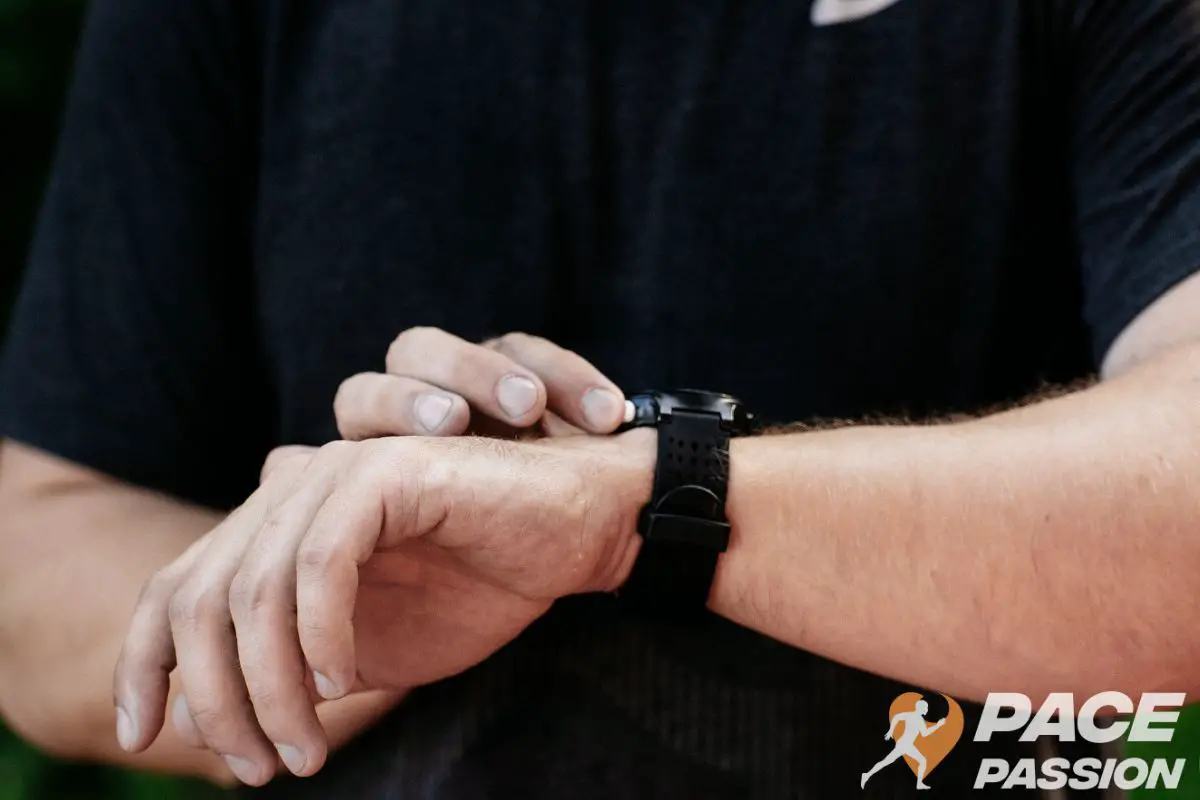How Many Steps Is 2 Miles? Understanding the Distance
Have you ever wondered how many steps in two miles when running or walking? Whether you’re trying to reach your daily step goal or planning out your running route, this article will provide you with the tools needed to measure steps for walking and running.
We’ll also explain how different factors can affect your total number of steps, as well as how long a 2-mile walk or run will typically take.
So get ready to learn everything you need to know!
How Many Steps Equal 2 Miles For Different People?
Have you ever wondered how many steps are in 2 miles? On average, there are 3000-3500 steps in 2 miles while running and 4100-4600 steps while walking. The average steps in 2 miles depend on many factors, such as your sex, height, stride length, speed, and terrain.
Why Do Runners Need to Know the Number of Steps in Miles?
By knowing the number of steps in 2 miles, runners can better track their distance and measure their progress. This information helps them set goals and gauge how far they’ve gone on each run or walk.
Knowing your step count is particularly helpful when you are just starting out with running. It gives you a solid benchmark for what an average run length should be. Once that baseline is established, runners can adjust as needed to gain improvements in speed, distance, and endurance, using these metrics to improve their performance over time.

How Many Steps Are In 2 Miles of Running and Walking?
A 1-mile run typically consists of about 1500-1750 steps for a person with an average step length, while walking at a normal speed is usually around 2050-2300 steps per 1 mile.
If you walk faster than your natural pace, then the number of steps in a mile will be reduced (around 1945 if you’re moving at 4 miles per hour, which is typically a slow jog).
Generally, stride length is longer when running than when walking due to increased speed. While people may average around 2 to 2.5 feet per stride in their walks, it’s common for strides to be 4-6 feet long while jogging or sprinting.
How Many Steps Is 2 Miles Walking?
For men and women alike, the longer your stride is, the fewer overall steps you’ll take while covering 2 miles. Women tend to have shorter strides, and they can typically cover 2 miles in 4300-4600 steps, while men average around 4200.
How Many Steps Is 2 Miles Running?
Now that we know about walking, how many steps are in two miles of running? On average, men take 3000 steps and women take 3500 steps when running 2 miles. This number can vary, depending on factors such as speed and stride length, which can differ from one runner to another.
Factors such as age, weight, fitness level, and terrain can also influence a person’s individual step count for any given distance. Let’s discuss this in more detail.
Comparing 2 Miles in Steps Depending on Various Factors
The number of steps in 2 miles can vary depending on factors such as individual stride length, fitness level, intensity, and speed.

1. Steps in 2 Miles of Walking and Running, Depending on Gender and Height
Runners may wonder if the same number of steps will cover the same distance, regardless of whether a man or woman is running. The answer to this question can vary depending on factors such as height and leg length.
This table shows the average 2 miles walking in steps, as well as running the same distance.
| Height | Steps walking (male) | Steps running (male) | Steps walking (female) | Steps running (female) |
|---|---|---|---|---|
| 5’2” | 4200 | 3200 | 4600 | 3500 |
| 5’4” | 4140 | 3150 | 4550 | 3450 |
| 5’6” | 4080 | 3100 | 4500 | 3400 |
| 5’8” | 4020 | 3050 | 4450 | 3350 |
| 5’10” | 3960 | 3000 | 4400 | 3300 |
| 6’0” | 3900 | 2950 | 4350 | 3250 |
| 6’2” | 3840 | 2900 | 4300 | 3200 |
2. Steps in 2 Miles of Running, Depending on Experience Level
When it comes to running, the number of steps taken in 2 miles can differ between beginner runners and experienced runners. Running ability, proficiency, technique, and form all contribute to the number of strides taken by novice and experienced athletes.
Stride length is usually shorter for beginners, as their muscles need time to adapt. Meanwhile, more seasoned individuals have developed muscle memory that allows them better efficiency over longer distances. Knowing this, you might be wondering 2 miles is how many steps for different levels of training?
Here’s a table showing the average number of steps in a 2-mile run for beginners, experienced runners, and advanced runners.
| Gender | Beginners | Experienced | Advanced |
|---|---|---|---|
| Male | 3150 | 2900 | 2650 |
| Female | 3350 | 3100 | 2850 |
3. Steps in 2 Miles of Running, Depending on Speed
The length of your stride has a big impact on the number of steps it takes to cover 2 miles when running. Generally speaking, the faster you run, the longer your stride will be.
This table shows the average number of steps, depending on your pace.
| Gender | 13 min/mile | 11 min/mile | 9 min/mile | 7 min/mile | 5 min/mile |
|---|---|---|---|---|---|
| Male | 3600 | 3100 | 2600 | 2100 | 1600 |
| Female | 3800 | 3300 | 2800 | 2300 | 1800 |
4. Steps in 2 Miles of Walking, Depending on Age
Younger people generally take fewer steps than older adults due to their longer stride length. The difference in stride length among younger and older people results from changes in joint stiffness and muscle strength as we get older.
Here’s a table showing the difference between the numbers of steps for a moderate 2-mile walk, depending on age:
| Age | Male | Female |
|---|---|---|
| 20-30 | 4000 | 4400 |
| 30-40 | 4050 | 4450 |
| 40-50 | 4100 | 4500 |
| 50-60 | 4200 | 4650 |
| 60-70 | 4300 | 4700 |
| 70+ | 4400+ | 4850+ |
Main Methods to Calculate Steps in 2 Miles
There are various methods to measure the number of steps in two miles, such as measuring stride length, using step calculators or formulas, and tracking step count with apps and pedometers.
How to Measure Stride Length?
The first way to measure your stride length is to divide the total pre-measured distance by the number of steps taken and multiply this number by 2. Remember that one stride is two steps.
Another way to measure your stride is by taking two steps and measuring that distance. This option gives you a more precise stride length, and you can measure it for both running and walking.
Subscribe to Our Running Newsletter!
Get free running tips from renowned professional athletes and discounts from top-notch brands.
Miles to Steps Calculators and Formulas
Step calculators are used to determine how many steps it takes for a person to walk or run a distance. There are several different calculations that can be used, depending on the individual factors of each person, such as their stride length, pace, and other metrics like age, weight, and sex.
Another way to approximately measure your average step is multiplying your height in inches by 0.415 for men and 0.413 for women. You then have to multiply this number by 2 to get one stride.
These forms of calculating steps are incredibly useful for runners because they allow them to more accurately track their progress toward goals and have better control over their pacing during workouts.
Distance Calculator: 2 Miles By Steps
We suggest you use the calculator to determine the distance covered by your steps count.
Distance Calculator
Result:
How to Track 2 Miles in Steps
Tracking your steps in a 2-mile run or walk allows you to measure target goals and improve performance. Step counting apps or pedometers can be used to count the number of steps taken during a two-mile run or walk.

Step Counting Apps
Understanding and tracking your running progress becomes a lot easier when you have the right tools. Step counting apps allow runners to accurately measure distances and convert them into various measurements, like kilometers or miles.
With step counting apps, users can set daily goals for step count and keep themselves motivated by monitoring their success over time.
Pedometers
Pedometers are devices used to count the steps taken by runners. They’re worn on the hip or waist and measure how far someone walks each day. Pedometers track the number of steps taken, time elapsed, and distance in miles.
They also monitor more subtle details, such as speed and duration of step. By properly calibrating the device before use, runners can accurately track their daily activity level for personal exercise goals.
What Affects the Number of Steps in 2 Miles?
Factors that influence the number of steps in a 2-mile run or walk include speed, footwear, stride length, terrain, age, weight, height, and sex. Let’s discuss these in further detail.
1. Speed
Speed is one of the most important factors associated with how many steps a person takes. Generally speaking, faster speeds result in less steps and slower speeds result in more steps.

When people move quickly, their steps are typically farther apart. They cover more ground with each stride, which results in fewer total steps than running or walking at slower speeds.
2. Footwear

Choosing the right footwear when taking on a 2-mile walk or run is essential to achieve better performance. Athletic footwear provides foot support and cushioning that helps improve efficiency and prevents damage caused by long-distance walking or running.

Pro Tip:
Uncomfortable or ill-fitting shoes can lead to decreased stride length. Correctly fitting shoes work with your gait pattern and give you more coverage, allowing you to cover more distance with each step.
3. Stride Length
Stride length is a key factor that determines the number of steps required to cover 2 miles. Men usually have longer strides than women because they tend to be taller and heavier. At the same time, experienced runners often have longer strides than beginner runners because their muscles are better trained.

4. Terrain
Different terrain can significantly affect the number of steps taken when running 2 miles. Running on uneven surfaces like mud or sand can shorten, disrupt, and limit your stride.

Rocks, tree roots, and other obstacles may also cause you to take smaller steps than usual. This ultimately increases overall step count at the same pace for a given distance.
On flat, smooth surfaces like concrete paths or sidewalks, runners are likely to take longer strides because they don’t have to worry about overcoming obstacles.
5. Age, Weight, Height, and Sex
Age and muscular strength affects stride length, ultimately determining how far someone can walk or run in a certain amount of steps. For example, an elderly person may take shorter strides than a young person due to reduced lung capacity and weaker muscles associated with aging. Similarly, those who are overweight typically have shorter strides than people who are lighter on their feet due to additional body mass, which hinders mobility.
A person’s height also impacts their stride length. Taller runners generally have more distance between each step. In addition, men are typically able to take longer strides than women, resulting in fewer steps per mile.

Is 2 Miles of Daily Running Enough?
Although the amount of steps required depends on an individual’s fitness level and personal needs, a 2-mile run is a good goal that can be beneficial to health and overall wellness.
However, the minimum recommended step target is 10,000 per day for adults, although this may vary based on age and individual fitness level. Older individuals should aim for 8000 steps, while those who are physically fit can work up to 12,500 or more total daily steps.

Pro Tip:
Adults over the age of 60 should aim for 6000-8000 steps per day, whereas those up to the age of 60 should try for 8000-10,000 daily to stay in good shape.
Is 2 Miles of Daily Walking Enough?
Going on a 2-mile walk every day is beneficial for many people, regardless of age, weight, or fitness level. Walking 2 miles per provides significant health benefits, such as improved wellness, lower cholesterol levels, and better sleep quality.
The amount of steps you need to walk each day depends largely on your personal health goals and physical condition. Generally speaking, the Centers for Disease Control and Prevention recommends adults get at least 150 minutes a week (2 hours and 30 minutes, or about 25 minutes per day) of moderate aerobic activity, such as brisk walking. However, it’s important to note that everyone is different, so this number may not be appropriate for everyone.
How Long Is 2 Miles in Time?
A person who is a pro runner, has a good stride length, and maintains high intensity can typically run 2 miles in about 12-15 minutes.
The average time to complete a 2-mile run is 18:30 minutes, with an average running pace of 9:15 minutes per mile. Beginner runners usually require 21 minutes, based on a 10:30 minute per mile running pace.
How to Increase the Number of Steps for 2 Miles for Runners
Here are some tips to increase your number of steps per 2 miles. This is known as stride frequency or cadence (number of steps per minute of running).
1. Use a Metronome or Music with a High BPM
Running to a metronome or music with a high number of beats per minute can help runners maintain a consistent cadence and improve their speed. Auditory cues have been proven to have positive effects on long-distance running. They help you stay in time while competing and training for races of any distance. Metronome running involves running in sync with the rhythm to maintain a steady cadence that can be measured either by steps per minute or number of strides at different levels of intensity.
2. Incorporate Strides into Your Runs
Strides are a great way for runners to improve their running speed and form. They can be part of a typical running schedule after an easy run, or used for a warm-up before workouts and tempo runs.
Strides are short bouts of tempo running lasting about 15-30 seconds. Typically between 12 to 20 strides at a fast but not all-out pace should be sufficient for a good workout. Incorporating strides helps boost stride rate, which in turn improves foot turnover, power production, and body control.

Pro Tip:
For novice runners, it is recommended to learn proper footing mechanics before pushing out short, high-exertion strides. Experienced runners will benefit from using strides in intervals, focusing on improving power production with shorter bouts of higher-effort work.
3. Jump Rope for Improved Foot Speed
Whether it’s done as part of a warm-up or as a full workout, jump roping can help develop agility and endurance. It can also help with cardiovascular fitness and fat burning.
Plyometric training exercises like jump roping not only increase muscle strength, but also help create balance and coordination, which translates to a better cadence.
4. Downhill Running for Practicing Quick Turnover
Incorporating downhill running into a training regimen helps a runner practice quick turnover and improve their cadence.
Quick turnover helps with improved agility, footwork, stride length, and efficiency in running. Doing this type of run once per week can also lead to significant improvement in fitness, which allows runners to become faster.
Frequently Asked Questions About 2 Miles in Steps
How Much Do 2 Miles of Steps Cost in Calories?
Someone with an average body weight may burn around 150-300 calories to complete a 2-mile run, while someone who is heavier might burn double the number. Similarly, if your pace is faster than 5 mph, the amount of calories that are burned increases.
Is 2 Miles 4000 Steps?
2 miles is not necessarily equivalent to 4000 steps. While this number can serve as a general guidepost, the reality is that the exact number of steps changes depending on your experience level, body composition, and type of running/walking.
How Many Steps Is 2 Miles on a Treadmill?
On a treadmill, taking 1800 to 2300 steps will typically cover a distance of approximately 1 mile. This can vary depending on your stride length and speed. It’s estimated that, at a moderate pace, a 2-mile effort requires around 3,500 steps for running and 4500 steps for walking.
Final Thoughts on Average Steps in 2 Miles
When it comes to the number of steps taken in 2 miles, there is no one-size-fits-all answer. The number of steps taken in a mile depends on various factors, such as stride length, walking or running speed, and individual characteristics like height and gender.
Approximately 10,000 steps are needed each day for cardio health, so it may be necessary to do more than a simple 2-mile run or walk each day.
Keeping track of steps has become increasingly easy with pedometers and smartphone apps that provide feedback. Whether you plan to run or just go for a mellow walk, keep a record of your steps to help track your goals and results..
How do you track your steps while running or walking? Please share your experience in the comments below.
Also Read:
- Best Shoes for Peroneal Tendonitis
- Do Nikes Run Big or Small
- Good 10K Time
- Do Nike Run Big or Small
- How Many Miles Is a 6K
- Best Shoes for Peroneal Tendonitis
- Best Running Rain Jackets
- What Does Walking 6 Miles a Day Do
- How Far is 14000 Steps
References:
- Hoeger W.K. et al.. ONE-MILE STEP COUNT AT WALKING AND RUNNING SPEEDS. ACSM’s Health & Fitness Journal 12(1):p 14-19, January 2008 https://journals.lww.com/acsm-healthfitness/Fulltext/2008/01000/ONE_MILE_STEP_COUNT_AT_WALKING_AND_RUNNING_SPEEDS.7.aspx
- Łucja Zaborowska, MD, PhD candidate. Stride Length Calculator https://www.omnicalculator.com/sports/stride-length
- Center for Disease Control and Prevention. https://www.cdc.gov/physicalactivity/walking/index.htm
- Medical News Today. How many steps should people take per day? https://www.medicalnewstoday.com/articles/how-many-steps-should-you-take-a-day
- Miles to Steps Calculator https://www.thecalculatorsite.com/health/miles-steps.php
- Sustainability Info. How many Steps are in a Kilometer? https://sustainabilityinfo.com/transportation/how-many-steps-in-a-kilometer/
If you have any questions or suggestions, you can contact us via email – [email protected]






